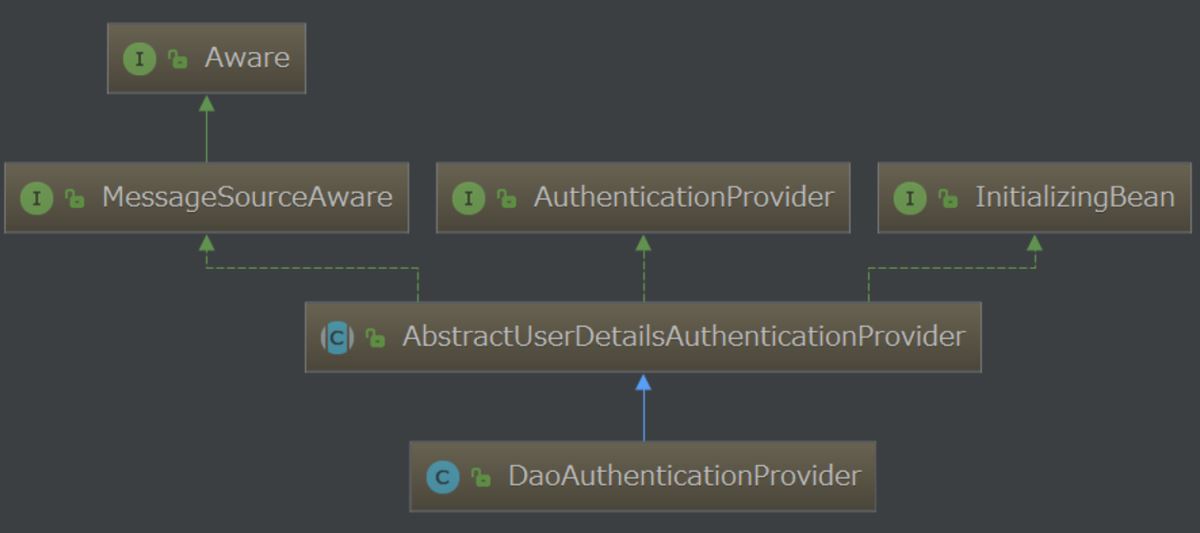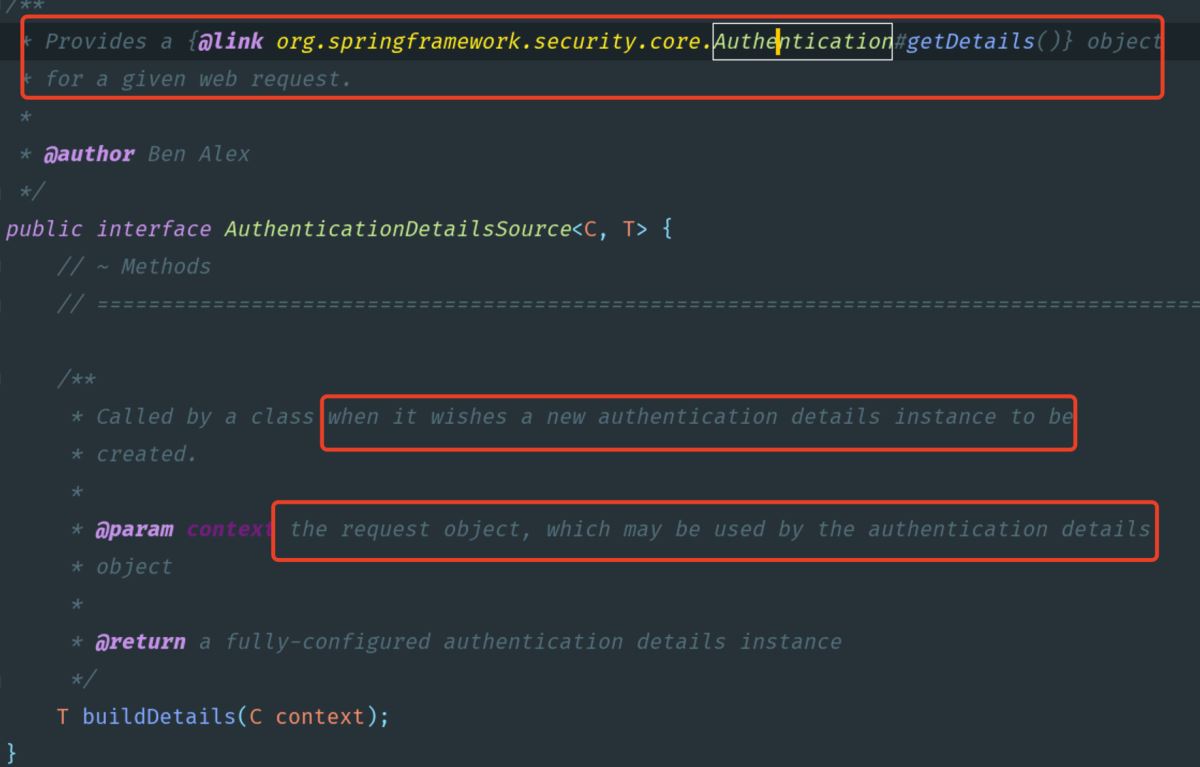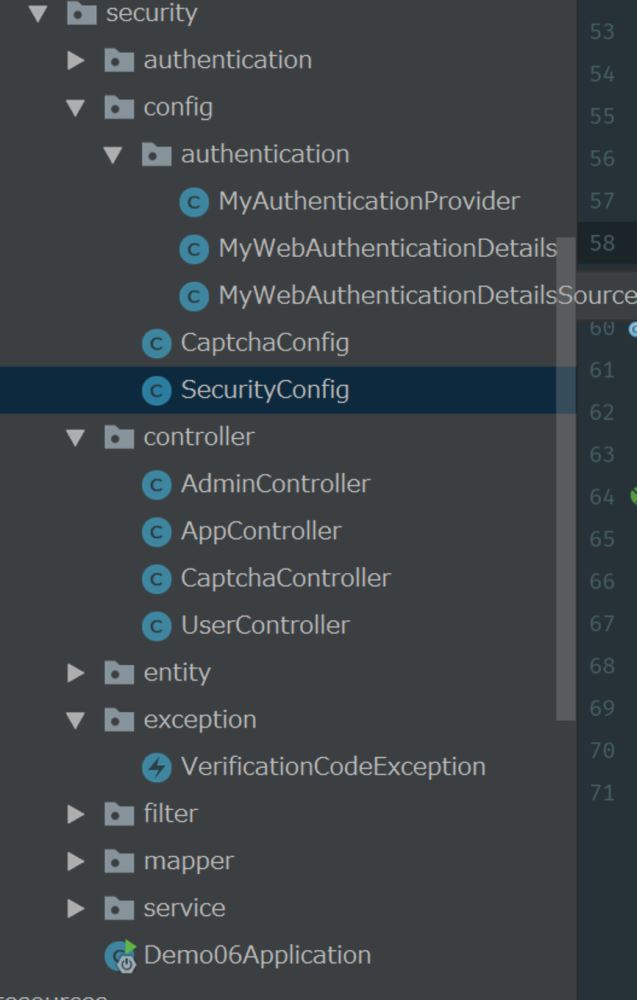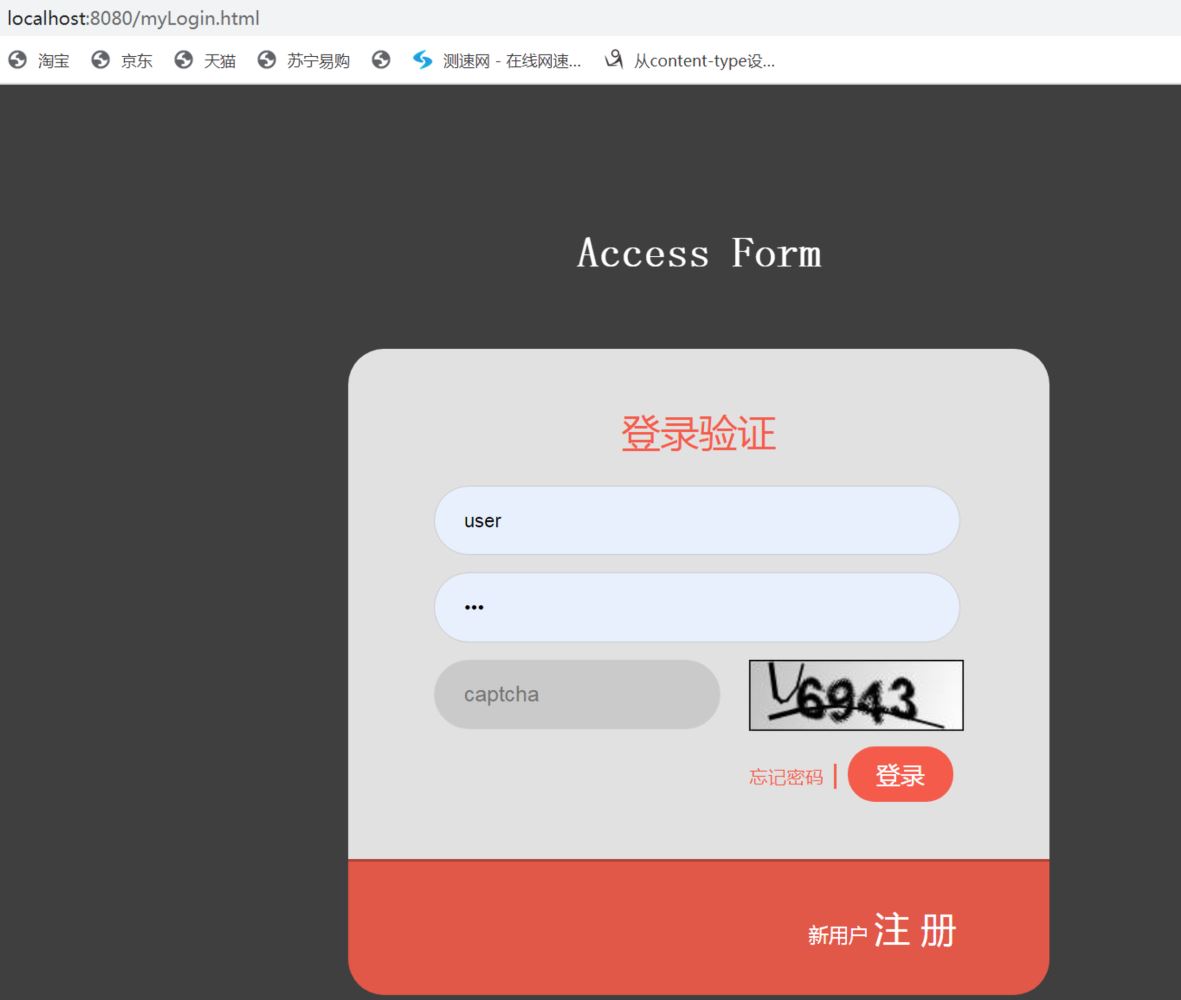前言
在上一个章节中,一一哥 带大家实现了如何在Spring Security中添加执行自定义的过滤器,进而实现验证码校验功能。这种实现方式,只是实现验证码功能的方式之一,接下来我们再学习另一种实现方式,就是利用AuthenticationProver来实现验证码功能,通过这个案例,我们学习如何进行自定义AuthenticationProver。
一. 认证提供器简介
在上一章节中,我带各位利用自定义的过滤器实现了图形验证码效果,接下来我们利用另一种方式,基于自定义的认证提供器来实现图形验证码。
1. 认证提供器AuthenticationProver
在第11章节中,壹哥 给大家讲过Spring Security的认证授权实现流程,其中就给大家讲解过AuthenticationProver的作用,接下来我们看一下AuthenticationProver接口的类关系图:

从上图中可知,AuthenticationProver是一个接口,该接口有一个直接的子类AbstractUserDetailsAuthenticationProver,该类有2个抽象的方法:additionalAuthenticationChecks() 和 retrieveUser(),如下图:


我们可以通过编写一个子类继承AbstractUserDetailsAuthenticationProver,复写这2个抽象方法,进行满足自己需求的扩展实现。Spring Security中的DaoAuthenticationProver子类就是通过复写这2个抽象方法,实现了基于数据库模型的认证授权。
我们今天会通过继承DaoAuthenticationProver,来实现图形验证码的校验功能。
2. WebAuthenticationDetails类介绍
了解完上面的AuthenticationProver类之后,我们还需要了解另一个类WebAuthenticationDetails。
我们知道在Spring Security中有一个UsernamePasswordAuthenticationToken类,封装了用户的principal、credentials信息,该类还从它的父类AbstractAuthenticationToken中继承了details信息。其中这个details信息表示认证用户的额外信息,比如请求用户的remoteAddress和sessionId等信息,这两个信息都是在另一个WebAuthenticationDetails类中定义的,所以我们可以利用WebAuthenticationDetails来封装用户的额外信息。

了解完上面的这些必要的API,我们就可以实现今天的需求了。
二. 实现图形验证码
1. 添加依赖包
我们还是和之前的案例一样,可以先创建一个新的module,创建过程略。
在本案例中我们依然采用github上的开源验证码解决方案kaptcha,所以需要在原有项目的基础上添加kaptcha的依赖包。
<dependencies>
<dependency>
<groupId>org.springframework.boot</groupId>
<artifactId>spring-boot-starter-web</artifactId>
</dependency>
<dependency>
<groupId>org.springframework.boot</groupId>
<artifactId>spring-boot-starter-security</artifactId>
</dependency>
<dependency>
<groupId>org.mybatis.spring.boot</groupId>
<artifactId>mybatis-spring-boot-starter</artifactId>
<version>1.3.1</version>
</dependency>
<dependency>
<groupId>mysql</groupId>
<artifactId>mysql-connector-java</artifactId>
<scope>runtime</scope>
</dependency>
<dependency>
<groupId>com.github.penggle</groupId>
<artifactId>kaptcha</artifactId>
<version>2.3.2</version>
</dependency>
<dependency>
<groupId>org.springframework.security</groupId>
<artifactId>spring-security-test</artifactId>
<scope>test</scope>
</dependency>
</dependencies>
2. 创建Producer对象
跟上一个案例一样,创建CaptchaConfig配置类,在该类中创建一个Producer对象,对验证码对象进行必要的配置。
@Configuration
public class CaptchaConfig {
@Bean
public Producer captcha() {
// 配置图形验证码的基本参数
Properties properties = new Properties();
// 图片宽度
properties.setProperty("kaptcha.image.wth", "150");
// 图片长度
properties.setProperty("kaptcha.image.height", "50");
// 字符集
properties.setProperty("kaptcha.textproducer.char.string", "0123456789");
// 字符长度
properties.setProperty("kaptcha.textproducer.char.length", "4");
Config config = new Config(properties);
// 使用默认的图形验证码实现,当然也可以自定义实现
DefaultKaptcha defaultKaptcha = new DefaultKaptcha();
defaultKaptcha.setConfig(config);
return defaultKaptcha;
}
}
3. 创建生成验证码的接口
在上面创建了Producer对象后,接着创建一个生成验证码的接口,该接口中负责生成验证码图片,并将验证码存储到session中。
@Controller
public class CaptchaController {
@Autowired
private Producer captchaProducer;
@GetMapping("/captcha.jpg")
public vo getCaptcha(HttpServletRequest request, HttpServletResponse response) throws IOException {
// 设置内容类型
response.setContentType("image/jpeg");
// 创建验证码文本
String capText = captchaProducer.createText();
// 将验证码文本设置到session
request.getSession().setAttribute("captcha", capText);
// 创建验证码图片
BufferedImage bi = captchaProducer.createImage(capText);
// 获取响应输出流
ServletOutputStream out = response.getOutputStream();
// 将图片验证码数据写到响应输出流
ImageIO.write(bi, "jpg", out);
// 推送并关闭响应输出流
try {
out.flush();
} finally {
out.close();
}
}
}
4. 自定义异常
接下来自定义一个运行时异常,用于处理验证码校验失败时抛出异常提示信息。
public class VerificationCodeException extends AuthenticationException {
public VerificationCodeException() {
super("图形验证码校验失败");
}
}
5. 自定义WebAuthenticationDetails
我在上面给大家介绍过WebAuthenticationDetails这个类,知道该类中可以封装用户的额外信息,所以在这里我们自定义一个WebAuthenticationDetails类,封装验证码信息,并把用户传递过来的验证码与session中保存的验证码进行对比。
/**
* 添加额外的用户认证信息
*/
public class MyWebAuthenticationDetails extends WebAuthenticationDetails {
private String imageCode;
private String savedImageCode;
public String getImageCode() {
return imageCode;
}
public String getSavedImageCode() {
return savedImageCode;
}
/**
* 补充用户提交的验证码和session保存的验证码
*/
public MyWebAuthenticationDetails(HttpServletRequest request) {
super(request);
this.imageCode = request.getParameter("captcha");
//获取session对象
HttpSession session = request.getSession();
this.savedImageCode = (String) session.getAttribute("captcha");
if (!StringUtils.isEmpty(this.savedImageCode)) {
// 随手清除验证码,不管是失败还是成功,所以客户端应在登录失败时刷新验证码
session.removeAttribute("captcha");
}
}
}
6. 自定义AuthenticationDetailsSource
AuthenticationDetailsSource是一个接口,该接口带有一个buildDetails方法,该方法会在创建一个新的authentication的details对象时被调用,而且可以在这里传递给details对象一个request参数,如下图所示:

所以这里我们定义一个AuthenticationDetailsSource类,通过该类构建出上面定义的WebAuthenticationDetails对象,并且给WebAuthenticationDetails传递进去HttpServletRequest对象。
@Component
public class MyWebAuthenticationDetailsSource implements AuthenticationDetailsSource<HttpServletRequest,WebAuthenticationDetails> {
/**
* 创建一个WebAuthenticationDetails对象
*/
@Overre
public WebAuthenticationDetails buildDetails(HttpServletRequest request) {
return new MyWebAuthenticationDetails(request);
}
}
7. 自定义DaoAuthenticationProver
接下来通过继承DaoAuthenticationProver父类,来引入对图形验证码的验证操作。
/**
* 在常规的数据库认证之上,添加图形验证码功能
*/
@Component
public class MyAuthenticationProver extends DaoAuthenticationProver {
/**
* 构造方法注入UserDetailService和PasswordEncoder
*/
public MyAuthenticationProver(UserDetailsService userDetailsService, PasswordEncoder passwordEncoder) {
this.setUserDetailsService(userDetailsService);
this.setPasswordEncoder(passwordEncoder);
}
/**
* 在常规的认证之上,添加额外的图形验证码功能
*/
@Overre
protected vo additionalAuthenticationChecks(UserDetails userDetails, UsernamePasswordAuthenticationToken usernamePasswordAuthenticationToken) throws AuthenticationException {
//获取token令牌中关联的details对象,并将其转换为我们自定义的MyWebAuthenticationDetails
MyWebAuthenticationDetails details = (MyWebAuthenticationDetails) usernamePasswordAuthenticationToken.getDetails();
String imageCode = details.getImageCode();
String savedImageCode = details.getSavedImageCode();
// 检验图形验证码
if (StringUtils.isEmpty(imageCode) || StringUtils.isEmpty(savedImageCode) || !imageCode.equals(savedImageCode)) {
throw new VerificationCodeException();
}
//在正常的认证检查之前,添加额外的关于图形验证码的校验
super.additionalAuthenticationChecks(userDetails, usernamePasswordAuthenticationToken);
}
}
8. 添加SecurityConfig
然后创建编写SecurityConfig类,关联配置我们前面编写的AuthenticationDetailsSource和AuthenticationProver类。
@SuppressWarnings("all")
@EnableWebSecurity(debug = true)
public class SecurityConfig extends WebSecurityConfigurerAdapter {
@Autowired
private AuthenticationDetailsSource<HttpServletRequest, WebAuthenticationDetails> myWebAuthenticationDetailsSource;
@Autowired
private AuthenticationProver authenticationProver;
@Overre
protected vo configure(HttpSecurity http) throws Exception {
http.authorizeRequests()
.antMatchers("/admin/api/**")
.hasRole("ADMIN")
.antMatchers("/user/api/**")
.hasRole("USER")
.antMatchers("/app/api/**", "/captcha.jpg")
.permitAll()
.anyRequest()
.authenticated()
.and()
.formLogin()
//这里关联配置自定义的AuthenticationDetailsSource
.authenticationDetailsSource(myWebAuthenticationDetailsSource)
.failureHandler(new SecurityAuthenticationFailureHandler())
.successHandler(new SecurityAuthenticationSuccessHandler())
.loginPage("/myLogin.html")
.loginProcessingUrl("/login")
.permitAll()
.and()
.csrf()
.disable();
}
//在这里关联我们自定义的AuthenticationProver
@Overre
protected vo configure(AuthenticationManagerBuilder auth) throws Exception {
auth.authenticationProver(authenticationProver);
}
@Bean
public PasswordEncoder passwordEncoder() {
return NoOpPasswordEncoder.getInstance();
}
}
9. 编写测试页面
最后编写一个自定义的登录页面,在这里添加对验证码接口的引用,我这里列出html的核心代码。
<body>
<div class="login">
<h2>Access Form</h2>
<div class="login-top">
<h1>登录验证</h1>
<form action="/login" method="post">
<input type="text" name="username" placeholder="username" />
<input type="password" name="password" placeholder="password" />
<div style="display: flex;">
<!-- 新增图形验证码的输入框 -->
<input type="text" name="captcha" placeholder="captcha" />
<!-- 图片指向图形验证码API -->
<img src="/captcha.jpg" </div>
<div class="forgot">
<a href="#" rel="external nofollow" rel="external nofollow" >忘记密码</a>
<input type="submit" value="登录" >
</div>
</form>
</div>
<div class="login-bottom">
<h3>新用户 <a href="#" rel="external nofollow" rel="external nofollow" >注 册</a></h3>
</div>
</div>
</body>
10. 代码结构
本案例的主要代码结构如下图所示,各位可以参考创建。

11. 启动项目测试
接下来我们启动项目,跳转到登录页面后,我们就可以看到验证码已经被创建出来了。

此时我们可以看到生成的数字验证码,在我们输入正确的用户名、密码、验证码后,就可以成功的登录进去访问web接口了。
至此,我们就实现了基于自定义的认证提供器来实现图形验证码功能了,这种实现方式要比第一种实现方式更复杂一些,其实都能满足我们的开发需求。有的小伙伴会问,开发时到底选择哪一种方式呢?壹哥觉得都无所谓的!你有什么更好的见解吗?可以在评论区留言哦!
到此这篇关于Spring Security基于自定义的认证提供器实现图形验证码的文章就介绍到这了,更多相关Spring Security认证提供器实现图形验证码内容请搜索服务器之家以前的文章或继续浏览下面的相关文章希望大家以后多多支持服务器之家!
原文链接:https://blog.csdn.net/syc000666/article/details/120481562















